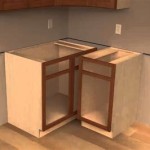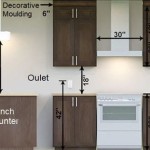Moving Kitchen Cabinets Up To Ceiling: A Comprehensive Guide
Elevating kitchen cabinets to the ceiling is a transformative remodeling project that maximizes vertical space, streamlines storage, and creates a visually cohesive look. However, undertaking this endeavor requires careful planning and execution. This guide provides essential insights and step-by-step instructions to ensure a successful transformation.
Benefits and Considerations:
Moving cabinets up to the ceiling offers several advantages:
- Increased Storage Capacity: Additional cabinetry provides ample space for cookware, appliances, and other kitchen essentials.
- Vertical Space Optimization: By utilizing full ceiling height, you maximize vertical space, making it easier to store taller items.
- Improved Aesthetics: Ceiling-to-floor cabinets create a seamless, visually appealing design element that elevates the kitchen's overall appearance.
However, there are some considerations to keep in mind:
- Structural Integrity: Ensure that your kitchen walls and ceiling are structurally sound to support the additional weight.
- Accessibility: Consider the height and accessibility of upper cabinets, especially for individuals with mobility limitations.
- Budget: This project can be labor-intensive and materials-intensive, so factor in the cost before making a decision.
Materials and Tools:
To move kitchen cabinets up to the ceiling, you will need the following materials and tools:
- New kitchen cabinets (optional)
- Level
- Stud finder
- Drill
- Screwdriver
- Wood screws
- Caulk gun
- Caulk
- Crown molding (optional)
Step-by-Step Instructions:
- Remove Existing Cabinets: Remove the doors and hardware from existing cabinets, then detach them from the wall and set them aside.
- Determine New Cabinet Heights: Measure the distance from the floor to the ceiling and subtract the height of the existing base cabinets. This will be the height of your new ceiling-to-floor cabinets.
- Install New Cabinets: Attach the new cabinets to the wall using wood screws, ensuring they are level and plumb. Secure them to wall studs for maximum support.
- Install Crown Molding (Optional): To finish the ceiling-to-floor cabinetry, you can install crown molding along the top edge.
- Caulk and Hardware: Apply caulk around the edges of the cabinets and trim for a seamless finish. Reinstall the doors and hardware.
Additional Tips:
- Consider using adjustable shelves to maximize storage flexibility.
- Install under-cabinet lighting to illuminate upper cabinets.
- Accessorize with pull-out drawers or lazy Susans for easy access to stored items.
- If necessary, consult with a licensed contractor or kitchen designer for professional guidance.
Conclusion:
Moving kitchen cabinets up to the ceiling is a project that transforms your kitchen into a more functional and visually appealing space. By following these comprehensive guidelines, you can elevate your kitchen's storage capacity, optimize its design, and create a cohesive and sophisticated aesthetic.

How To Raise Your Kitchen Cabinets The Ceiling Wildfire Interiors

Image Result For Move Cabinets To Ceiling And Add Shelf Kitchen Remodel Renovation

How To Raise Your Kitchen Cabinets The Ceiling Wildfire Interiors

Genius Diy Raising Kitchen Cabinets And Adding An Open Shelf The Crazy Craft Lady

How To Raise Your Kitchen Cabinets The Ceiling Wildfire Interiors

Extending Kitchen Cabinets Up To The Ceiling Thrifty Decor Diy And Organizing

Extending Kitchen Cabinets To Ceiling American Wood Reface

Extending Kitchen Cabinets To Ceiling American Wood Reface

Raised Kitchen Cabinet Makeover Sawdust 2 Stitches

Extending Kitchen Cabinets To Ceiling 7 Pros Cons
Related Posts








